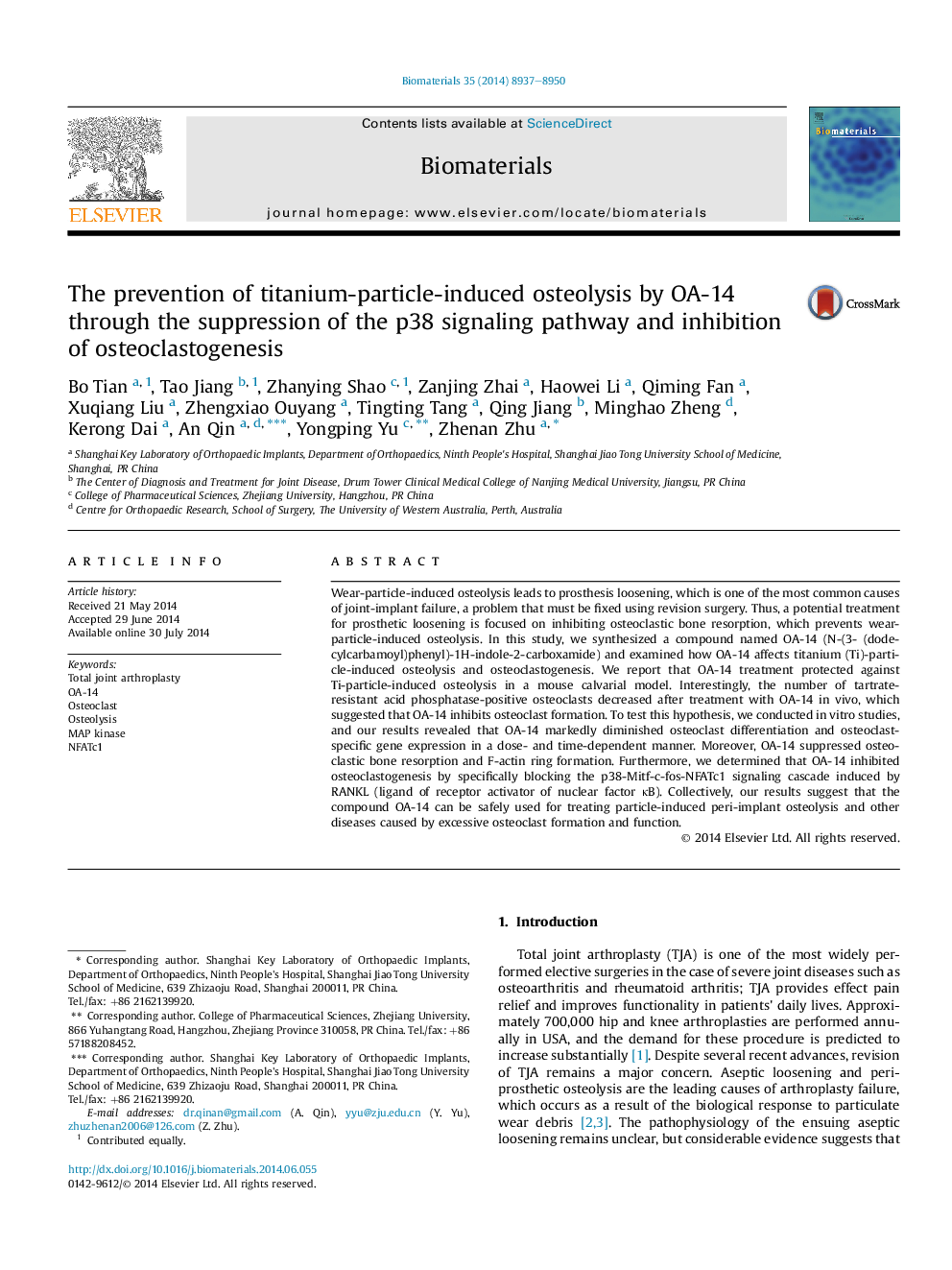| Article ID | Journal | Published Year | Pages | File Type |
|---|---|---|---|---|
| 10227314 | Biomaterials | 2014 | 14 Pages |
Abstract
Wear-particle-induced osteolysis leads to prosthesis loosening, which is one of the most common causes of joint-implant failure, a problem that must be fixed using revision surgery. Thus, a potential treatment for prosthetic loosening is focused on inhibiting osteoclastic bone resorption, which prevents wear-particle-induced osteolysis. In this study, we synthesized a compound named OA-14 (N-(3- (dodecylcarbamoyl)phenyl)-1H-indole-2-carboxamide) and examined how OA-14 affects titanium (Ti)-particle-induced osteolysis and osteoclastogenesis. We report that OA-14 treatment protected against Ti-particle-induced osteolysis in a mouse calvarial model. Interestingly, the number of tartrate-resistant acid phosphatase-positive osteoclasts decreased after treatment with OA-14 in vivo, which suggested that OA-14 inhibits osteoclast formation. To test this hypothesis, we conducted in vitro studies, and our results revealed that OA-14 markedly diminished osteoclast differentiation and osteoclast-specific gene expression in a dose- and time-dependent manner. Moreover, OA-14 suppressed osteoclastic bone resorption and F-actin ring formation. Furthermore, we determined that OA-14 inhibited osteoclastogenesis by specifically blocking the p38-Mitf-c-fos-NFATc1 signaling cascade induced by RANKL (ligand of receptor activator of nuclear factor κB). Collectively, our results suggest that the compound OA-14 can be safely used for treating particle-induced peri-implant osteolysis and other diseases caused by excessive osteoclast formation and function.
Related Topics
Physical Sciences and Engineering
Chemical Engineering
Bioengineering
Authors
Bo Tian, Tao Jiang, Zhanying Shao, Zanjing Zhai, Haowei Li, Qiming Fan, Xuqiang Liu, Zhengxiao Ouyang, Tingting Tang, Qing Jiang, Minghao Zheng, Kerong Dai, An Qin, Yongping Yu, Zhenan Zhu,
